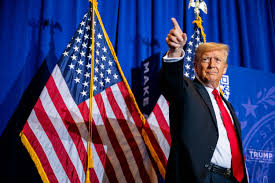
Reviewing Narendra Modi’s Narrow Third-Term Victory
The election results reveal that Brand Modi has lost some of its shine, indicating that even Mr. Modi is susceptible to anti-incumbency. This development offers renewed hope to the opposition and signifies a potential return to coalition politics in India.
Prime Minister Narendra Modi has secured a third consecutive term in the 2024 general elections, but the victory came in a much tighter race than anticipated. His Bharatiya Janata Party (BJP) is poised to fall short of an outright majority, leading in the 543-seat parliament but below the required 272 seats. However, the party’s coalition partners have gained additional seats, ensuring a pathway to governance.
This outcome represents a personal setback for Mr. Modi, who has consistently secured majorities in previous elections as both the Chief Minister of Gujarat and India’s Prime Minister, dominating the country’s politics for the past decade.
The Surge of the INDIA Opposition Alliance
The election results signify a surprising resurgence for the Congress Party-led Indian National Developmental Inclusive Alliance (INDIA), defying earlier predictions of its decline and sharply diverging from both exit polls and pre-election surveys.
More than 640 million people participated in the seven-week election, hailed as a “world record” by election authorities. Nearly half of the voters were women, showcasing a significant demographic shift.
Economic and Social Backdrop
Despite the BJP emerging as the single largest party, the election results indicate a notable shift in voter sentiment. The party’s significant loss of more than 50 seats, compared to its previous majority, dims the allure of a third term, especially given Mr. Modi’s ambitious campaign targeting 400 coalition seats. This has led to jubilation in the Congress camp and some despair among BJP supporters, who had high expectations.
Mr. Modi’s supporters attribute his third-term victory to several factors: a record of stable governance, the appeal of continuity, efficient welfare programs, and the perception that he has enhanced India’s global image. To his Hindu nationalist base, Mr. Modi delivered on key manifesto promises, including revoking the autonomy of Indian-administered Kashmir, building the Ram temple in Ayodhya, and implementing a controversial citizenship law. Additionally, many BJP-ruled states have implemented laws tightening regulations on interfaith marriages.
However, the BJP’s significant drop in seats can be linked to various issues, including joblessness, rising prices, growing inequality, and a controversial army recruitment reform. Mr. Modi’s harsh and divisive campaign, particularly targeting Muslims, could also have alienated voters in some regions.
Regional Dynamics and the Role of Uttar Pradesh
One of the BJP’s largest setbacks occurred in Uttar Pradesh (UP), a state larger than the United Kingdom and three times as populous. With 80 parliamentary seats, UP holds significant sway in national politics and is often considered the gateway to Delhi. Both Mr. Modi and Rahul Gandhi hold seats there.
The Shift in Political Dynamics
The election results reveal that Brand Modi has lost some of its shine, indicating that even Mr. Modi is susceptible to anti-incumbency. This development offers renewed hope to the opposition and signifies a potential return to coalition politics in India.
If the BJP forms the government, it will be dependent on allies and will need to adopt a more consultative and deliberative approach. This dependency makes the party vulnerable to collapse if allies feel neglected, marking a shift from the perceived all-powerful stance of the BJP in 2014 and 2019.
The Impact on the Dominant BJP
Mr. Modi’s uninterrupted decade-long reign at the top has underscored India’s embrace of what some political scientists term a one-party dominant system. This system is characterized by a charismatic leader, unrivaled control over resources and communication, unmatched organizational machinery, and an opposition in disarray. Shrinking freedoms also characterize a one-party dominant system.
There is more hope for the opposition ahead. The BJP holds about a third of India’s 4,000-plus state assembly seats and has lost to regional parties before. Over the next 14 months, five states are set for elections, all of which could be keenly contested.
However, the 2024 election results have restored India to what many consider “normal politics,” with a range of parties sharing and competing for power.
A Resurgent Opposition
The election results will energize the much-criticized Congress-led opposition. In February, the diverse coalition known as INDIA faced turmoil when one of its key leaders, Nitish Kumar, exited, only to later rejoin the BJP. However, under the leadership of Rahul Gandhi, the opposition ran a spirited campaign and narrowed the gap despite fewer resources and a partisan media.
There is more hope for the opposition ahead. The BJP holds about a third of India’s 4,000-plus state assembly seats and has lost to regional parties before. Over the next 14 months, five states are set for elections, all of which could be keenly contested. With contests in Maharashtra, Jharkhand, and Haryana this year, the BJP could face substantial competition. Delhi’s upcoming election may pose challenges, while Bihar in October presents a regional hurdle.
Looking Forward
The nation requires considerable efforts and some degree of healing. While the economy, currently driven by government expenditure, is showing signs of improvement, rising inequality remains a pressing concern. To achieve sustainable growth, it is imperative to boost private investment and consumption, thereby increasing the financial resources available to the poor and middle class. However, this objective hinges on the creation of adequate employment opportunities. In a country teeming with ambition and frustration, the younger demographic—constituting approximately two-fifths of India’s population exceeding one billion—may begin to shift their support away from the BJP.
Mr. Modi has drawn criticism for marginalizing Muslims, India’s largest minority, who have borne the brunt of violence. His government faces accusations of stifling dissent, with leading opposition figures jailed on what they say are trumped-up charges. However, third terms have often proved to be rocky for many leaders, with unforeseen and unpredictable events potentially derailing their plans.
Conclusion
The 2024 Indian General Elections have underscored the changing dynamics of Indian politics. While Prime Minister Narendra Modi has secured a third term, the election results reflect a more balanced and competitive political landscape. The resurgence of the INDIA alliance and the significant loss of seats for the BJP mark a shift towards coalition politics and a renewed hope for a more inclusive and democratic governance model. As the new government takes shape, the challenges and opportunities ahead will define India’s path in the coming years.
Riya Kothvaale is a Research Fellow at the Sixteenth Council



